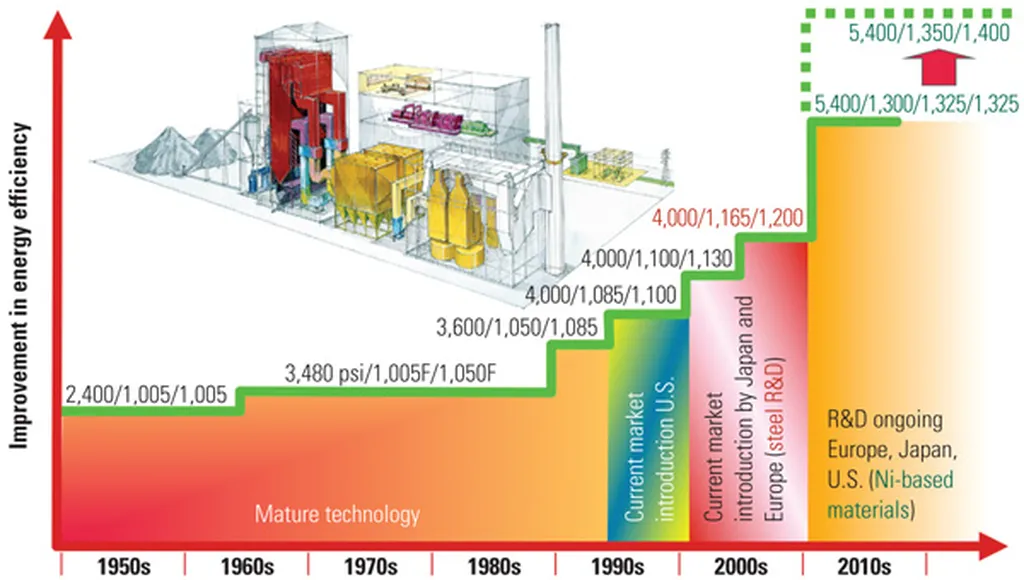In the relentless pursuit of cleaner and more efficient energy, the steam turbine blade stands as a critical component, and recent research is pushing the boundaries of what these blades can endure. A study published in *Teshugang* (translated as “Iron and Steel”) by lead author Zhao Jiqing and colleagues from the Special Steel Institute of Central Iron and Steel Research Institute in Beijing sheds light on the cutting-edge materials and technologies that are revolutionizing ultra-supercritical power plants.
The research delves into the intricate world of blade materials, categorizing them based on their operating environments. For high-temperature blades, the study highlights the use of 9% to 12% ferritic heat-resistant steels in ultra-supercritical power plants operating at temperatures between 600°C and 620°C. However, as temperatures rise above 630°C, the thermal stability of iron-based materials becomes insufficient, necessitating the use of nickel-based heat-resistant alloys. “The world’s first 630°C demonstration unit selected the 80A blade alloy,” notes Zhao, underscoring the shift towards more advanced materials.
For steam parameters exceeding 700°C, the research indicates that nickel-based blade alloys are still in the developmental stages. Countries around the world are exploring γ’ precipitation-strengthened nickel-based alloys, with China making significant strides in developing the W/Mo composite-strengthened GY200 nickel-based blade alloy. “Domestic research and development of materials and products are underway and will become the main development direction in the field of blade materials,” Zhao explains, hinting at the potential for technological breakthroughs by 2030.
The study also examines last-stage large blades, which can be divided into 12%Cr martensitic steel, high-Cr precipitation-strengthened stainless steel, and titanium alloys. The emergence of new-generation last-stage blade steels, such as 2Cr12Ni4Mo3VNbN and B50A789G, promises improved strength-toughness matches, poised to replace traditional materials and find applications in high-power units.
The relationship between composition, microstructure, and properties of ferritic (martensitic) blade steels is meticulously summarized, covering aspects such as composition control, secondary remelting, forging billet, and final forging forming processes. The research provides key insights into the production process and offers suggestions for the future development of blade steels.
For the energy sector, the implications are profound. The development of advanced blade materials is crucial for enhancing the efficiency and reliability of ultra-supercritical power plants, which are essential for meeting global energy demands while reducing emissions. As Zhao and his team continue to push the boundaries of material science, the future of steam turbine blades looks brighter than ever. The research, published in *Teshugang*, serves as a beacon of innovation, guiding the industry towards a more sustainable and efficient energy landscape.

